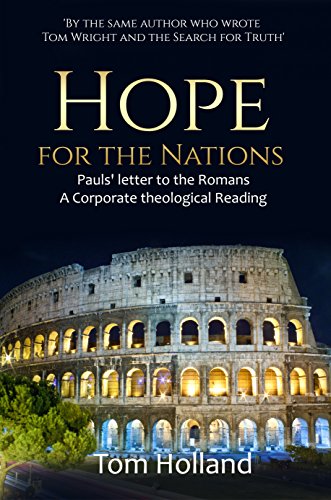A Brief Book Summary from Books At a Glance
by Mark Baker
About the Author
Tom Holland serves as Senior Research Fellow at Union School of Theology, Oxford. He has authored many books in the field of Pauline Theology including Contours of Pauline Theology and Tom Wright and the Search for Truth.
Overview of the Book
Paul’s Jewish heritage was richly embedded in his thought, even after his conversion on the Damascus road. Many scholars reach for Greco-Roman contexts to explain Paul’s letters, but we would do much better to dig deeper into the Old Testament. In particular, the twin themes of the Passover and the Exodus permeate Paul’s thought and serve as interpretive keys to Pauline theology. This book walks through Romans verse-by-verse in order to provide a detailed yet readable exposition of Paul’s thought, particularly concerning Paul’s Paschal New Exodus Theology.
Table of Contents
Introduction: Getting into Romans
Romans 1: The Messiah King and His Mission
Romans 2: Rebellious Subjects
Romans 3: The Required Solution
Romans 4: Committed Faith is not an Option
Romans 5: The Family Story
Romans 6: The Messiah King and His People’s Deliverance
Romans 7: An Analysis of the Problem
Romans 8: The Liberated People
Romans 9: When People Try to Justify Themselves
Romans 10: Painful Concern
Romans 11: What Will Happen to Israel?
Romans 12: What an Incredible Transformation!
Romans 13: What Shall We Do with the Law?
Romans 14: Caring for the Weak
Romans 15: When All is Going Well
Romans 16: Catching up on Friends
Introduction: Getting into Romans
This introduction to the book of Romans will not cover the normal introductory topics (dating, occasion, or composition of the letter) but rather more theological issues. There are two key theological introductory matters to note. First, we should read Romans through “Jewish” lenses, not Greek. Though the letter was written in Greek, the primary meaning and influence of the letter remain thoroughly embedded in its Old Testament roots.
The two main problems that Paul addresses in the letter come from this Jewish background, namely, the issues of circumcision and food that was sacrificed to idols. Second, Romans should be read primarily through a “corporate” lens. Yes, the truths in the letter apply to the individual, but not in the way that our individualistic, postmodern society does. Though many commentaries admit this point, they often lapse into individualism in their interpretation. This book seeks to apply these two lenses to Paul’s letter to the Romans in order to put forth a faithful reading of this amazing letter.
Romans 1: The Messiah King and His Mission
Paul’s famous statement in Romans 1:16–17 is rooted in Isaiah 28:16. When Paul states that he is “not ashamed of the gospel,” he means that his trust in God’s promised Messiah will not return void. Isaiah promised a new exodus–God’s people would return to the land, and Paul points his readers to this same theme. “Yet it is not simply the case that Paul embraces the technical vocabulary of Isaiah; rather, he is using the historical situation of the Jews in exile as a model through which he can explain the gospel message” (47). Paul’s quotation of Habakkuk 2:4 in Romans 1:17 further reinforces this new exodus motif. God’s righteousness is revealed because God has demonstrated that he is faithful to his promises. Similarly, the phrase “from faith for faith” probably is better translated “from God’s faithfulness to human faithfulness,” showing that God’s covenant faithfulness “begets human faithfulness in return” (51). . . .
[To continue reading this summary, please see below....]The remainder of this article is premium content. Become a member to continue reading.
Already have an account? Sign In
